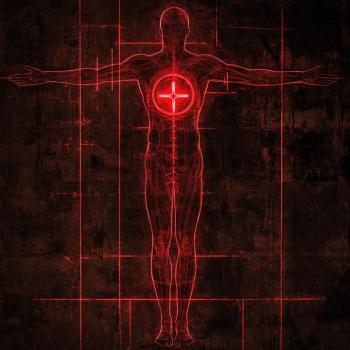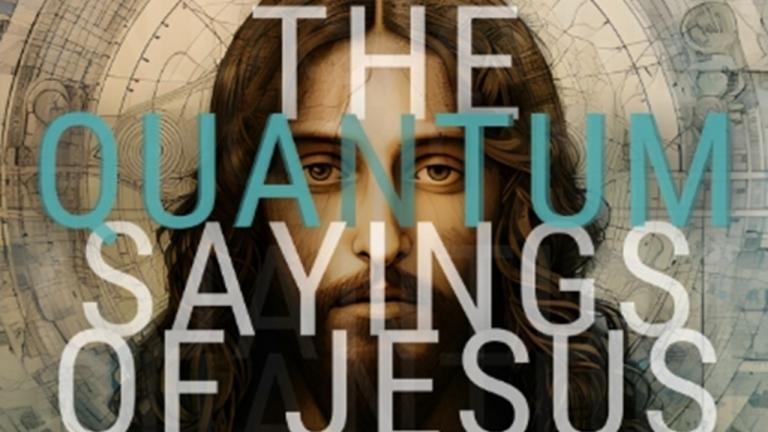
The Gospel of Thomas isn’t what most people think it is. First of all, it’s not a Gnostic text. Meaning, it doesn’t contain teachings about a Demiurge that created our world or stories about how the physical body is evil and the spiritual world is holy. Those teachings come from Sethian Gnosticism and none of that appears in the pages of the Gospel of Thomas.
Thomas’s Gospel is also not a Gospel, technically. Meaning, it doesn’t contain any stories of the birth of Jesus, the life of Jesus, the crucifixion and resurrection of Jesus, or the Second Coming of Jesus.
The Gospel of Thomas is, quite simply, a collection of the sayings of Jesus that someone wrote down a very long time ago.
How long ago? Well, historians and scholars disagree [which they always do on nearly every subject], but some scholars and historians date the Gospel of Thomas to somewhere between the writing of the Gospel of Mark and the Gospel of John.
Why? For several reasons. One, because whoever wrote the Gospel of John seems to have gone out of his way to respond to specific things found in the Gospel of Thomas. To do that, the author would have had to have a copy of Thomas in hand. Another reason is that Thomas is a type of “Q-Document” which means it proves that early Christians were in the habit of writing down the sayings of Jesus which were later used to construct the New Testament Gospels we have in our Bible today.
Another bit of interesting trivia is that, only a few months ago, a fragment of text was translated which included sayings of Jesus taken from the Gospel of Matthew [ch. 6], the Gospel of Luke [ch. 12], and the Gospel of Thomas [saying 27]. That fragment is now the oldest fragment of the Gospel of Matthew we have. So, this tells us that early Christians valued these sayings of Jesus no matter where they came from: Matthew, Luke, or Thomas.
So, why didn’t the Gospel of Thomas end up in our modern New Testament Scriptures? Well, that’s a longer story. One that New Testament Scholar and author Dr. Elaine Pagels has beautifully summarized in her book, “Beyond Belief”, which reveals the political rivalry between Irenaeus and the followers of someone named Valentinus, whose disciples valued the Gospel of Thomas. This conflict between the Proto-Orthodox and the Valentinians continued for a few hundred years until the time of Constantine who favored the Proto-Orthodox and gave them the authority necessary to end the arguments once and for all. This came in the form of a letter from Athanasius sent on Easter to church leaders and monasteries with instructions to stop teaching from and using certain texts in their worship services and sermons. One of those texts was the Gospel of Thomas.
As a result, copies of Thomas’s Gospel and several other texts, including the Gospel of Mary, the Gospel of Philip, The Gospel of Truth, etc., were burned or destroyed. Thankfully, one faithful monk in the region of Nag Hammadi, Egypt decided to bury [not destroy] many of those books sometime around 340 AD.
Those texts sat under the sand, sealed in a large clay jar, until they were accidentally discovered in 1945 by two treasure-hunting brothers.
Those texts, known as the Nag Hammadi texts, were not translated for over a decade after being discovered, and that’s when scholars realized they had [among all the other texts] a complete copy of the Gospel of Thomas.
This time capsule treasure-trove confirmed that a Q-type document existed, and that the Gospel of Thomas was a legitimate source of quotations from Jesus collected sometime between 70 AD and 90 AD [or earlier].
Half of those sayings found in the Gospel of Thomas appear in our New Testament Gospels, but the other half are entirely new.
So…what’s the big deal? What do they say? Why should we care?
To be honest, the first time I tried to read the Gospel of Thomas I thought it was total nonsense. The new sayings it contained were incoherent and vague. I tossed it aside as an obvious forgery or hoax.
But, then I read a book by William G. Duffy called “The Hidden Gospel of Thomas” that totally opened my eyes. In this book, Duffy explains the reason why those sayings of Jesus from Thomas are so difficult to understand, and provided the lens by which to interpret their meaning.
At first, I was highly skeptical, but by the end of his Introduction, I was convinced he had cracked the code on Thomas. Further reading confirmed it. The text wasn’t incoherent. It wasn’t vague or nonsensical at all. In fact, it was one of the most profound and mind-blowing collection of the sayings of Jesus I had ever read.
The message Jesus shares with us in Thomas’s Gospel is simple: We are all connected to the Divine and we are all connected to one another.
This “Quantum” reality is in line with what mystics from all religious streams have been saying for centuries now, from Buddha to Black Elk, and Rumi to Meister Eckhart: We are all One. Separation is an illusion.
Funny enough, this is also what Quantum Physics confirms for us as well. The world is not made of separate objects or individuals. It’s not even made of separate atoms and molecules. Instead, reality is simply this: The Quantum Field is all there is and everything is an expression of that Quantum Field.
All of that lead me to read and study more on the Gospel of Thomas. I devoured books and commentaries from John Dominic Crossan and others that illuminated the text even further. I started to work on reading and interpreting those sayings for myself and eventually started writing a weekly series called The Inner Circle here on Patheos [and my Patreon page] to go through each saying one at a time.
That series, which lasted over a year, is now collected and revised in a brand new book called “The Quantum Sayings of Jesus: Decoding the Lost Gospel of Thomas“, released today on Amazon in Paperback and Kindle editions. It’s already ranked as a #1 Best Seller and Hot New Release on Amazon, and it’s been endorsed by a variety of authors and theologians, including:
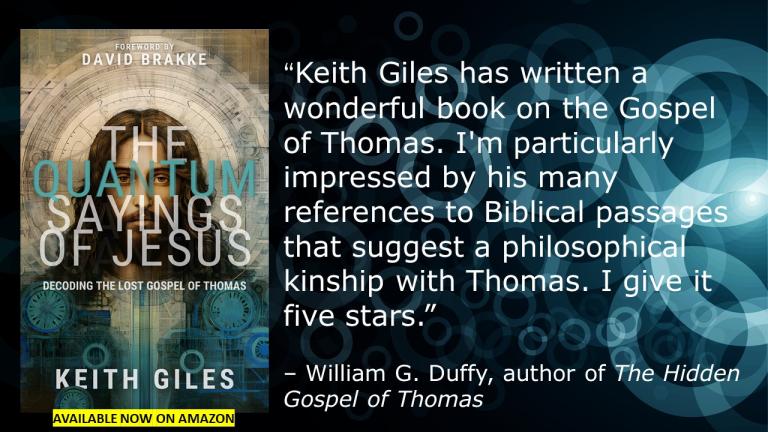
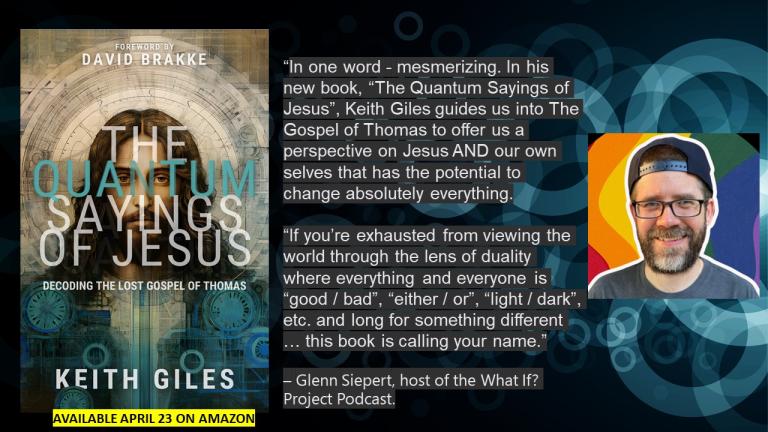
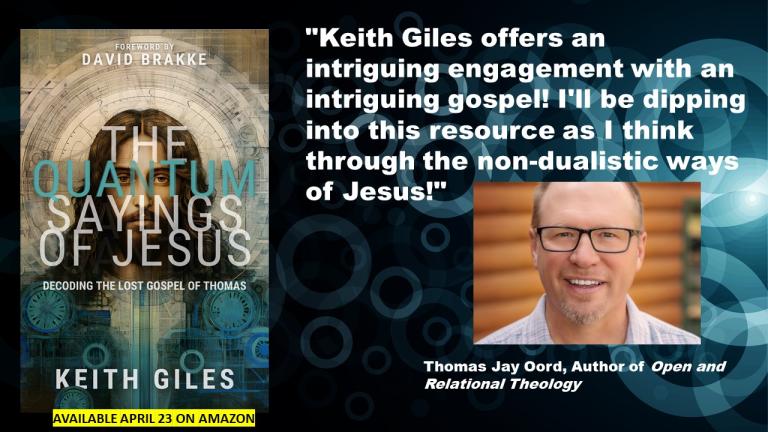
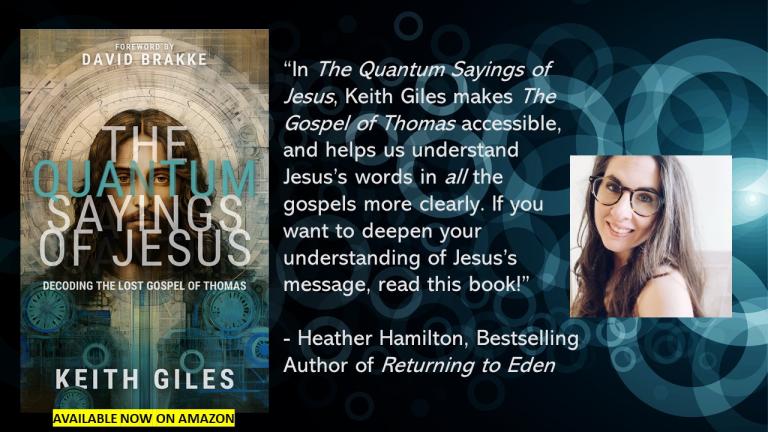
So, the sayings of Jesus from the Gospel of Thomas are in line with what Quantum Physicists like Sir James Jean have said, like:
“The stream of knowledge is heading towards a non-mechanical reality; the Universe begins to look more like a great thought than like a great machine. Mind no longer appears to be an accidental intruder into the realm of matter…we ought rather hail it as the creator and governor of the realm of matter.”
Or what Dr. Amit Goswami has said:
“In the world of Quantum Physics we face a great dilemma…[there is] a paradox if consciousness is made of atoms…But this paradox is resolved if all things, including atoms, are made of consciousness. The world is made of consciousness. Atoms are made of consciousness.”
Or what Professor Conn Henry from John Hopkins University has said:
“One benefit of switching humanity to a correct perception of the world is the resulting joy of discovering the mental nature of the Universe…Beyond the acquisition of this perception, Physics can no longer help…The Universe is immaterial. It is mental and spiritual. Love and enjoy.”
In short, we are all connected and separation is an illusion.
This teaching, if humanity can really, truly embrace it, is what heals us, restores us, and empowers us to love one another, to love our neighbor as ourself, to love our enemies, to lay down our weapons of warfare, to share all that we have with everyone, everywhere, to erase national boundaries and ethnic divisions, and racial prejudice.
This is why I’m so proud of my new book. Because I truly believe this message that we hear from Jesus in the Gospel of Thomas is exactly the message of Oneness and Unity that we so desperately need today.
I hope you’ll pick up a copy. I hope you’ll embrace this message and take it to heart.
We really need more unity, oneness and love these days.
Don’t you agree?
**
The newest book from Keith Giles, “The Quantum Sayings of Jesus: Decoding the Lost Gospel of Thomas” releases TODAY on Amazon. Order HERE>
Keith Giles is the best-selling author of the Jesus Un series. He has appeared on CNN, USA Today, BuzzFeed, and John Fugelsang’s “Tell Me Everything.” He hosts the Second Cup with Keith podcast, and co-hosts the Apostates Anonymous podcast, and the Heretic Happy Hour Podcast.










